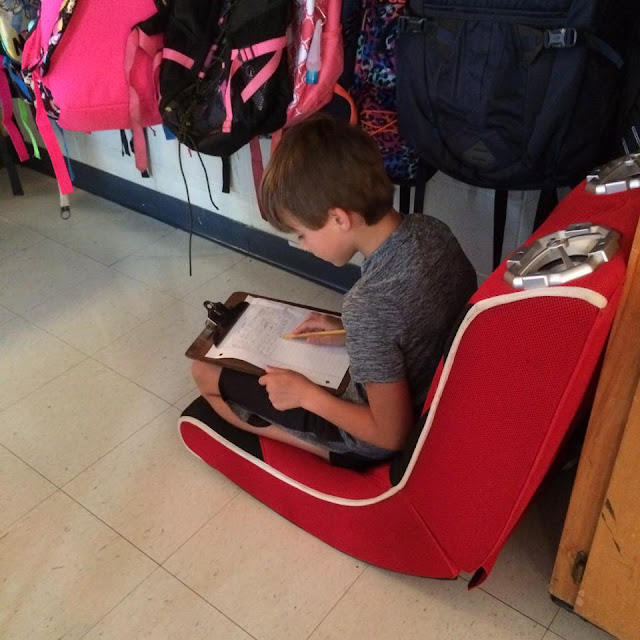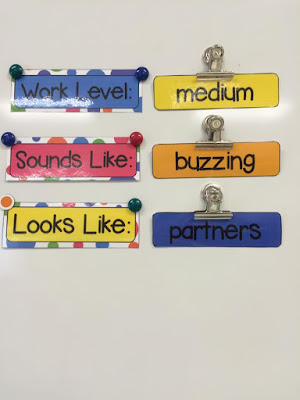I knew when I started flexible seating that I needed to set the tone at the beginning of the year to set my class up for success. During the first week of school, I made sure that every student had an
opportunity to try out every seat at least once. As the students sat in new seats, they would complete the simple evaluation I made.
I then took all of the info and did simple tally marks next to each type of seating. It was obvious very quickly that the traditional seating came in at the very bottom of the list. This information was very valuable to me in many ways. The most was to make sure that each student was in a seat he or she loved for our very first district-mandated testing on day 4.
Before I let my students start choosing their own seats, they first had to have sat in every seat in the classroom. I kept a simple checklist and moved my students four times a day. Each time, I made sure that they were also with a new groups of students.
On the day the students were first given the opportunity to make their own seating choices, we had a meeting to begin our day. We discussed how everything had gone and completed three charts. I wanted the students to have ownership of the flexible seating in our classroom. The headings of the charts were "What It Is", "What It Isn't", and "Rules".
After several days of rotating, the students were able to come up with great thoughts that led to some meaningful conversations. I think if I had told them all of this at the beginning, they wouldn't have had the buy-in to the flexible seating.
Now, my students have completely been turned over to choosing their own seats. We change seats after each subject, which is four times a day. We rotate through choosing seats in alphabetical order. Once a student is first to choose his or her seat, he or she then becomes last and moves back up the list. This means that with twenty-six students, it only takes six days before each student gets to be the first to choose his or her seat.
Our day goes something like this:
My students and I meet on the rug as we begin each subject. This is our meeting place for instructions,
discussions, read-alouds,
reading together, watching videos, etc.
After the students know what work they need to complete, they get to
make the decision of what seating arrangement works best for them for the
situation. I haven’t had any student
stay in the same seat all day long.
I use the signs included in this free packet to
post on the board. This helps remind
students of expectations and the seating choices that will help them be
successful.
I
have been absolutely amazed at how changing the atmosphere of the classroom to
more of a home feeling has completely altered the way my students perform. It’s been nothing short of AWESOME!
If you are thinking about changing to
flexible seating and have any questions, I am happy to correspond with you and help
out.
Grab these FREE No-Prep Math & Literacy Centers when you sign up for my emails.
Helping you to have your best school year is just...












.png)
I'm wondering what the "Work Level" signs mean... Could you explain a little further on that? Thanks!
ReplyDelete
ReplyDeleteI'd love to know more about your first day with flexible seating - did you do it all at once? How do you and students keep track of whose "turn" it is to choose first? Have you experienced any backlash from parents? I like the idea of changing up the seats during each block for the first week so that every student experiences each kind of seat, but isn't that too frequent a switch for the rest of the year?
When you figure out that certain students work best in certain places, don't you want to keep that going and assign the seats?
How do you keep the traditional desk/chair combo (some kids like this option) from being a punishment? I'm looking forward to hearing from you!
Merci!
Hello i am new to grade 2 3 after 10 years in kindergarten. I am trying flex seating this year and would love to chat. @87walkerl
ReplyDelete